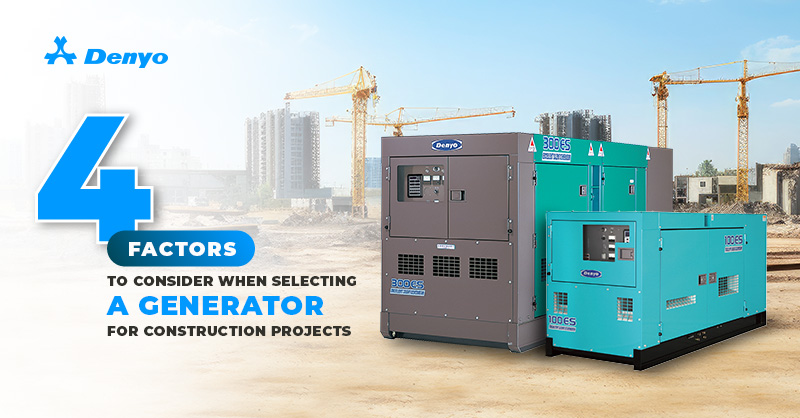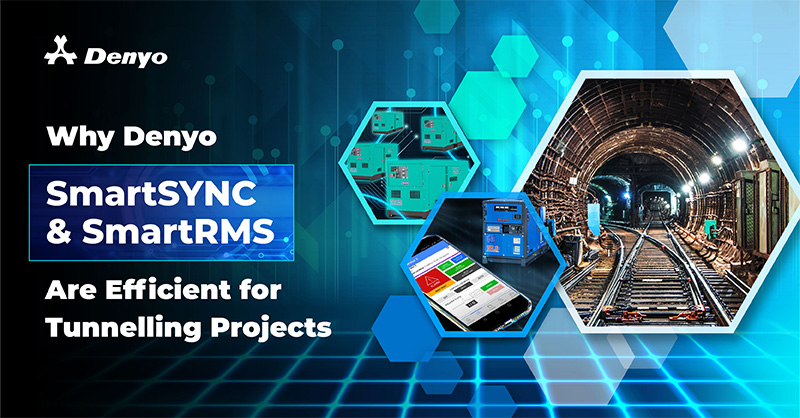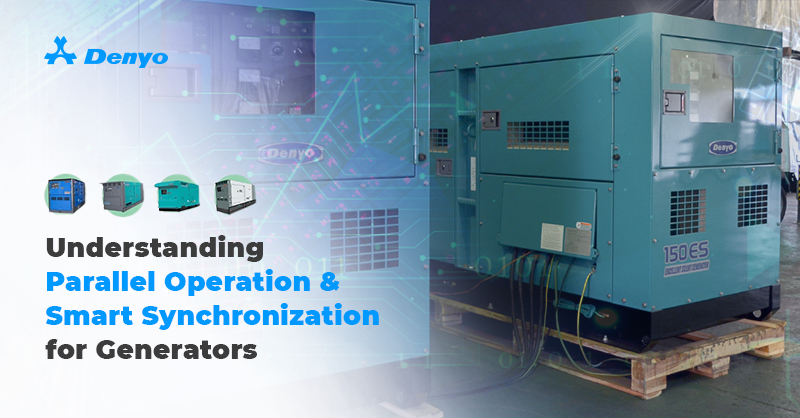4 Factors To Consider When Selecting a Generator For Construction Projects

Regarding construction projects, having a reliable and portable power source is essential as accessibility to a power grid is not always feasible on construction sites, and electricity needs may shift around the vicinity throughout the project. This necessitates a mobile power source that can adapt to changing demands. Generators are essential on construction sites due to their portability and ability to independently supply power to equipment and tools, which are critical for construction operations.
This blog explores the four key factors to consider when selecting a generator for your construction project, ensuring compliance with regulations and optimal performance.
Managing Noise Levels on Construction Sites
Construction sites generate high decibel levels, which can negatively impact human ears, especially on workers working on site. Continuous exposure to high noise levels can lead to noise-induced hearing loss, a common issue in the construction industry. Constant noise can also have psychological impacts, such as increased stress, irritability, and fatigue, which can significantly reduce productivity. Workers struggling to communicate over loud noises can lead to misunderstandings and mistakes, and the fatigue from constant noise exposure can slow down the pace of work. Find out more about how is sound measured and why does it matter.
In addition to productivity concerns, construction projects have to meet the noise regulations in certain residential or commercial areas, which otherwise can lead to fines or delays. To ensure your construction project runs smoothly, it is crucial to choose a generator that meets the noise regulation standard, as construction work near a residential building located within 150 meters must adhere to specific noise limits based on time and day:
- • 7am to 7pm: noise should not exceed 75dBA (Leq – 12hrs)
- • 7pm to 10pm: noise should not exceed 65dBA (Leq – 1hr)
- • 10pm to 7am: noise should not exceed 55dBA (Leq – 1hr)
To manage such a situation, choose a silent generator with sound attenuation features like acoustic enclosures or mufflers to reduce noise output, typically around 60 to 70 dBA at full load – making them suitable for sites near residential or commercial areas with strict noise regulations. Measure the dBA level at four points, each 7 meters from the source – to ensure compliance with site-specific noise regulations.
*Leq refers to the equivalent continuous noise level over the specific period, i.e. 5 minutes, 1 hour, or 12 hours. Find out more here: NEA Construction Noise Control.
Importance of Generator Reliability in Construction Projects
In today’s fast-paced world, construction projects are no exception to the pressure of tight schedules. As timelines shrink, machinery and labour are pushed to work extra hours daily, often leading to round-the-clock shifts to meet deadlines. In such a crucial situation, machinery is frequently subjected to prolonged operation without breaks, sometimes clocking double-digits in hours at one go.
If the equipment is not built to last, it can quickly fail due to overheating, wear and tear, or circuitry issues, bringing the entire workflow to a halt. This downtime can result in costly delays, potential financial damage, and contractual penalties due to missed deadlines. Hence, it is critical to use a generator that is not only reliable but also capable of handling the most demanding operating conditions.
Managing Pollution at Construction Sites
Pollution at construction sites, such as fuel spills and waste discharge, remains a critical issue, with strict regulations and penalties enforced by authorities. Environmental concerns are increasingly at the forefront of political and commercial discussions, even in developing countries and emerging markets, where such issues previously took a back seat to development and progress. Government agencies are now more proactive in implementing pollution controls.
To capitalize on the opportunities in these regions, starting on the right footing by using equipment that minimizes pollution risks is fundamental— for instance, choosing a generator equipped with an eco-base to contain fuel, oil, and coolant water if there is accidental discharge, which eliminates the need for an extra tray beneath the generator. Find out more about the benefits of eco-base generator.
Importance of Generator’s Size and Portability for Construction Projects
In construction, having a generator that meets both power demands and physical site constraints is crucial for efficient operations. While ensuring that your generator can supply the necessary power, the physical size and portability are often overlooked factors that can significantly impact the workflow on-site.
Before selecting a generator, it is essential to evaluate the layout of the construction site. Narrow pathways, uneven terrain, or limited space can make transporting and positioning larger generators challenging. For instance, if your site has steep inclines or off-road conditions, you will need a generator that can be easily manoeuvred or one that is mounted on a trailer for more accessible transport. Similarly, working in confined spaces may require compact models that still deliver adequate power but fit within tight quarters without obstructing movement or access.
The weight and dimensions of a generator can also affect how it is delivered and positioned on-site. For larger, high-capacity generators, ensure there are proper means for offloading and moving the unit, such as forklifts or cranes. Portable generators, on the other hand, are ideal for sites where mobility is key, allowing you to reposition the generator as the project progresses without heavy equipment. By carefully considering your site’s physical constraints alongside your power needs, you can avoid operational delays and safety issues while ensuring the generator is efficiently integrated into your project.
Key Takeaways for Choosing the Right Generator for a Construction Project
Selecting the right generator involves adhering to noise and safety regulations, ensuring proper generator sizing and portability, and choosing a reliable and environmentally friendly model. Considering these factors, you can ensure a reliable power supply, optimize productivity, and contribute to a more sustainable construction process. Contact us today for more information on selecting the right generator for your project, or explore Denyo’s full range of silent and eco-friendly generators.


